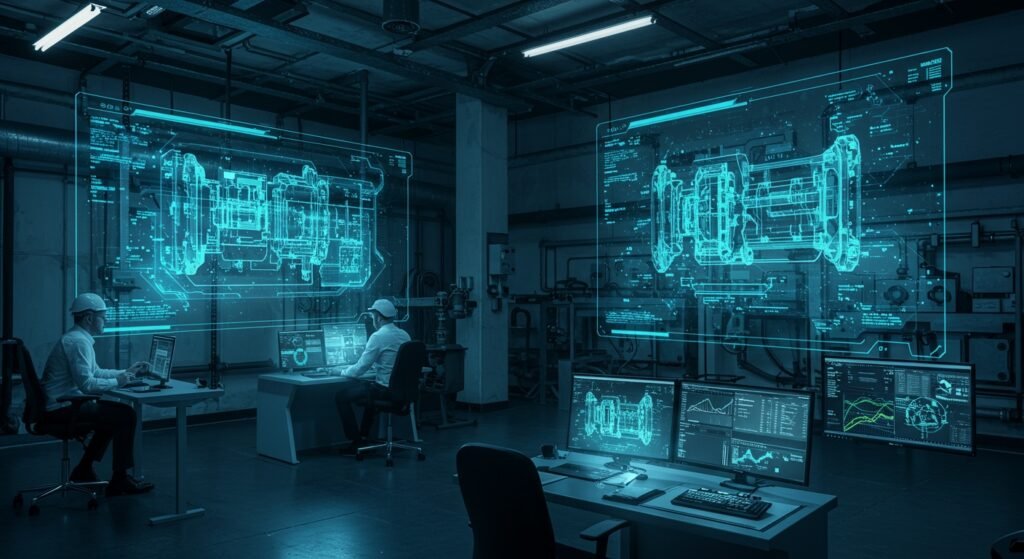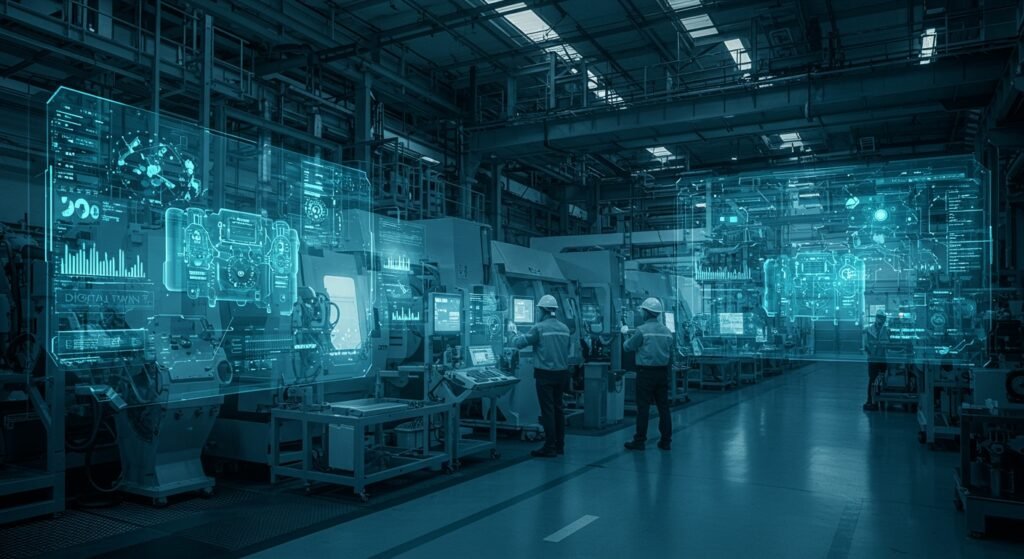In the rapidly evolving landscape of modern industry, the integration of advanced technologies is paramount for maintaining competitiveness and efficiency. Among these innovations, Digital Twins in Industrial Systems stand out as a revolutionary concept, promising to redefine how businesses design, operate, and maintain their physical assets. A digital twin is essentially a virtual replica of a physical object, system, or process. It’s not just a static model; it’s a dynamic, living counterpart that receives real-time data from its physical twin, allowing for continuous monitoring, analysis, and simulation.
Table of Contents
- What Are Digital Twins?
- Key Benefits of Digital Twins in Industrial Systems
- Real-World Applications Across Industries
- Implementing Digital Twins: Steps and Considerations
- The Future of Industrial Systems with Digital Twins
What Are Digital Twins?
At its core, a digital twin is a sophisticated virtual model of a physical asset, process, or system. Enabled by sensors attached to the physical counterpart, data is collected in real-time and transmitted to the digital model. This continuous data flow ensures that the digital twin accurately reflects the physical twin’s current state, performance, and behavior. This goes far beyond traditional CAD models or simulations; it’s a dynamic connection that evolves with its physical twin throughout its lifecycle. From a single piece of machinery to an entire factory floor, digital twins provide unprecedented insight and control, paving the way for advanced industrial engineering practices.
Key Benefits of Digital Twins in Industrial Systems
The adoption of digital twin technology offers a myriad of advantages for industrial operations. These benefits collectively contribute to enhanced operational efficiency, reduced costs, and improved decision-making.
Enhanced Predictive Maintenance
One of the most significant advantages is the ability to predict equipment failures before they occur. By continuously monitoring real-time data from sensors on physical assets, digital twins can detect anomalies and predict potential malfunctions, enabling proactive maintenance rather than reactive repairs. This minimizes downtime, extends asset lifespan, and reduces maintenance costs significantly.
Optimized Performance and Efficiency
Digital twins allow for real-time performance monitoring and optimization. Engineers can simulate various scenarios, test changes to operational parameters, and identify the most efficient configurations without risking physical assets. This leads to optimized energy consumption, improved throughput, and better resource utilization across the industrial system.
Improved Product Lifecycle Management
From design to decommissioning, digital twins support the entire product lifecycle. They enable rapid prototyping, virtual testing of new designs, and continuous feedback loops from products in the field. This iterative process accelerates innovation and ensures that products meet performance expectations throughout their operational life.
Reduced Risk and Enhanced Safety
By simulating complex operations in a virtual environment, companies can identify potential risks and safety hazards before they manifest in the physical world. This allows for the development of safer procedures and systems, protecting both equipment and personnel. Training can also be conducted in a safe, virtual environment.
Remote Monitoring and Operations
Digital twins facilitate remote monitoring and control of industrial assets. This capability is invaluable for geographically dispersed operations or for situations where on-site presence is challenging. Operators can gain deep insights into asset health and performance from anywhere, enabling more agile and responsive management.
Real-World Applications Across Industries
Digital Twins in Industrial Systems are not limited to a single sector; their versatility makes them applicable across various industries. In manufacturing, they optimize production lines and quality control. In energy, they manage smart grids and predict equipment failures in power plants. For infrastructure, they monitor bridges and buildings for structural integrity. Even in healthcare, they’re being explored for hospital logistics and patient flow optimization. This broad applicability underscores the transformative potential of this technology.
Implementing Digital Twins: Steps and Considerations
While the benefits are clear, implementing digital twin technology requires careful planning and execution. Key steps include selecting the right sensors and IoT devices, establishing robust data connectivity, developing sophisticated analytical models, and integrating with existing enterprise systems. Challenges often revolve around data security, interoperability between different systems, and the initial investment cost. Organizations often consult resources like the Industrial Internet Consortium for best practices and frameworks.
| Aspect | Traditional Approach | Digital Twin Approach |
|---|---|---|
| Maintenance | Reactive/Time-based | Predictive/Prescriptive |
| Problem Solving | Physical testing, trial-and-error | Virtual simulation, rapid analysis |
| Data Insight | Limited, historical | Real-time, comprehensive |
| Efficiency | Optimized periodically | Continuously optimized |
The Future of Industrial Systems with Digital Twins
The trajectory for digital twins in industrial systems is steep and promising. As IoT technology advances and AI/ML capabilities become more sophisticated, digital twins will become even more intelligent, autonomous, and integrated. They will form the backbone of Industry 4.0 and smart factories, enabling fully connected, self-optimizing ecosystems. The future will see digital twins not just mimicking, but truly predicting and even autonomously controlling physical systems, leading to unprecedented levels of efficiency and innovation. To learn more about related technologies, consider reading Our Guide to IoT in Manufacturing.
The profound impact of digital twins on industrial systems cannot be overstated. From revolutionizing maintenance strategies to unlocking new levels of operational efficiency and product innovation, this technology is a cornerstone of modern industrial engineering. As businesses continue to embrace digital transformation, digital twins will undoubtedly play a pivotal role in shaping the factories, infrastructure, and products of tomorrow.


